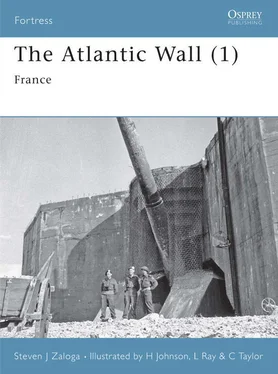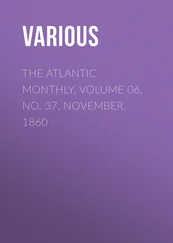Construction of Batterie Siegfried began in August 1940, armed with four 380mm SKC/34 in B-Gerüst C/39 turrets, near the village of Haringzelles. The battery was located close to the sea and within sight of Cap Gris-Nez where several supporting observation posts were located. The four turrets were of a special design consisting of a main circular gun casemate with a smaller multistory bunker for ammunition and support located to the left of the gun pit. Each casemate consumed 800 tonnes of steel and 12,000m³ of concrete.
The battery was declared operational on January 11, 1942, and it was renamed later in the year in honor of the head of the Organization Todt, Fritz Todt, who died in a plane crash on February 8, 1942. Unlike Batterie Lindemann, the four gun turrets were not named, but simply numbered from 1 to 4, with Turret 4 being the one located closest the sea and Turret 1 being the furthest inland and the site of today’s Musée de Mur de l’Atlantique.
This battery was part of MAA.242 and was commanded by Kapitänleutnant MA Klaus Momber. The battery was part of StP 186 Saitenspiel, which included numerous support facilities, defensive positions and anti-aircraft batteries. The associated surface search radar and optical rangefinder for the battery was positioned along the cliffs near the village of Cran-aux-Oeufs about 1km to the northwest.
Like Batterie Lindemann, Batterie Todt was engaged in bombardment of Channel shipping in 1942–44 as well as periodic campaigns against English ports, coastal towns, and coastal artillery batteries. The battery’s most active combat took place in the summer of 1944 when in took part in a campaign against Dover and Folkestone along with Batterien Lindemann and Grosser-Kurfürst. As Canadian troops closed in, it fired for the last time on September 29, 1944, hours before its surrender. (Artwork by Hugh Johnson)
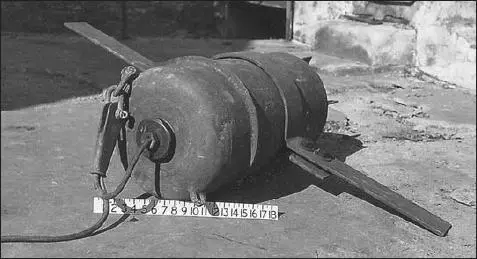
Some of the ports along the Atlantic Wall were protected by controlled minefields. To supplement German mines, the Franz WB was developed based on surplus French depth charges. These mines were also used to demolish harbor facilities prior to their surrender. (NARA)
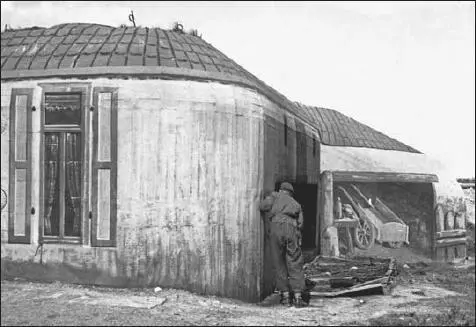
One style of camouflage for the shoreline casemates was trompe l’oeil painting, intended to make the bunker look like a harmless civilian home. This example is certainly more elaborate than most, complete with a cart in the false garage. This Canadian soldier is looking into the gun embrasure of the casemate, which had been covered with a false wooden cover now on the ground. (NAC PA-131229 Ken Bell)
Atlantic Wall artillery in France by type
| Caliber |
Navy coastal |
Army coastal |
Army railroad |
Army field |
Sub-total |
| 75mm |
129 |
0 |
0 |
4 |
133 |
| 76.2mm |
4 |
0 |
0 |
144 |
148 |
| 88mm |
23 |
24 |
0 |
0 |
47 |
| 100mm |
0 |
0 |
8 |
96 |
104 |
| 105mm |
64 |
116 |
0 |
164 |
344 |
| Other light |
23 |
6 |
0 |
12 |
41 |
| 122mm |
0 |
18 |
0 |
80 |
98 |
| 150mm |
56 |
4 |
4 |
72 |
136 |
| 155mm |
28 |
106 |
0 |
210 |
344 |
| Other medium |
45 |
24 |
0 |
0 |
69 |
| 170mm |
19 |
34 |
0 |
22 |
75 |
| 210mm |
4 |
3 |
1 |
8 |
16 |
| 240mm |
12 |
0 |
5 |
0 |
17 |
| 280mm |
10 |
0 |
15 |
0 |
25 |
| Other heavy |
37 |
14 |
2 |
0 |
53 |
| Total |
454 |
349 |
35 |
812 |
1,650 |
Atlantic Wall artillery density by sector
| Sector |
AOK 15 |
AOK 7 |
AOK 1 |
Sub-total |
| Coastline (km) |
708.5 |
1,566 |
817.9 |
3,092.4 |
| Service |
Army/Navy |
Army/Navy |
Army/Navy |
- |
| Light (75–105mm) |
256/35 |
282/87 |
90/135 |
885 |
| Medium (150–155mm) |
259/35 |
133/33 |
72/47 |
579 |
| Heavy (170–406mm) |
46/39 |
17/37 |
41/6 |
186 |
| Sub-total |
561/109 |
432/157 |
203/188 |
1,196/454 |
| Total |
670 |
589 |
391 |
1,650 |
| Guns per 10km |
9.5 |
3.8 |
4.8 |
5.3 |
Although the coastal artillery batteries were an economical way to cover large areas of coastline with minimal coverage, they could do little against Commando raids. The task of patrolling the coastline was assigned to the infantry divisions stationed near the coast. These sectors consisted of divisional KVA ( Küsten Verteidigung Abschnitt : coast defense sector), further broken down into regimental KVG ( Küsten Verteidigung Gruppen ), battalion-strength strongpoint groups ( Stützpunktgruppe ), company-sized StP ( Stützpunkt : strongpoints) and finally platoon-sized WN ( Wiederstandnest : resistance points). Since the Kriegsmarine received the bulk of the construction work in 1943, these positions were often little more than field entrenchments with a small number of fortified gun pits and personnel shelters. Except on the Pas-de-Calais, there was little fortification of the infantry coastal defenses until 1944. The bunkers and defensive positions were intended to compensate for the severe shortage of troops. German tactical doctrine recommended that an infantry division be allotted no more than 6–10km of front to defend, but the occupation divisions in France were frequently allotted 50 to 100km of coastline to defend, sometimes even more in the remoter locations of Brittany or the Atlantic coast.
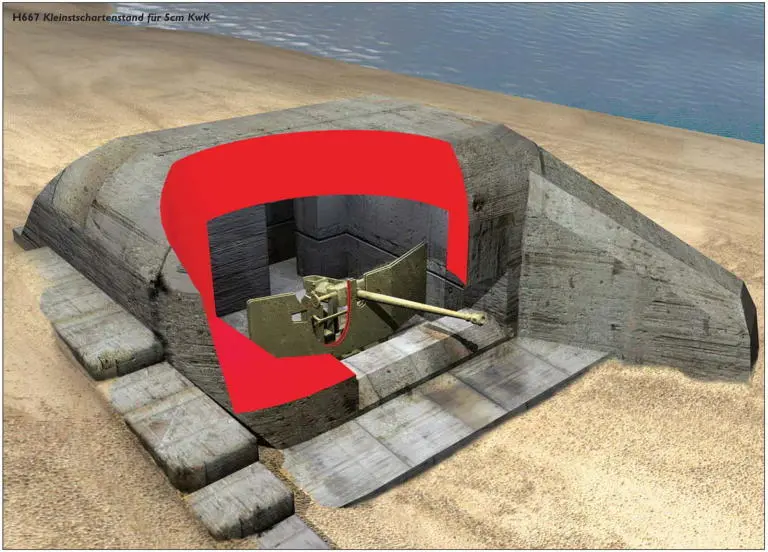
H667 Kleinstschartenstand für 5cm KwK
The H667 was the most common anti-tank gun casemate built on the Atlantic Wall, with some 651 constructed in 1943–44, of which 443 were built on the French coast. Construction of this type began in January 1943 and each required 165m³ of concrete, 7.5 tonnes of steel rebar and 1.3 tonnes of other steel. These were designed to provide better protection than the common Vf600 open gun pits widely used for the pedestal-mounted 50mm gun. This weapon consisted of obsolete KwK 39 and KwK 40 tank guns mounted on a simple pedestal ( Sockellafetten ) with a spaced armor shield added in front. During 1944, some of these guns were re-bored to fire 75mm ammunition. Since the gun was mounted on a fixed pedestal, there was no need for a rear garage door as was so characteristic of other Atlantic Wall gun casemates. (See for example the H677 for the 88mm gun on page 26 of Osprey Fortress 37: D-Day Fortifications in Normandy. ) Instead, the casemate had a simple armored door at the rear, protected by a low concrete wall.
Читать дальше
